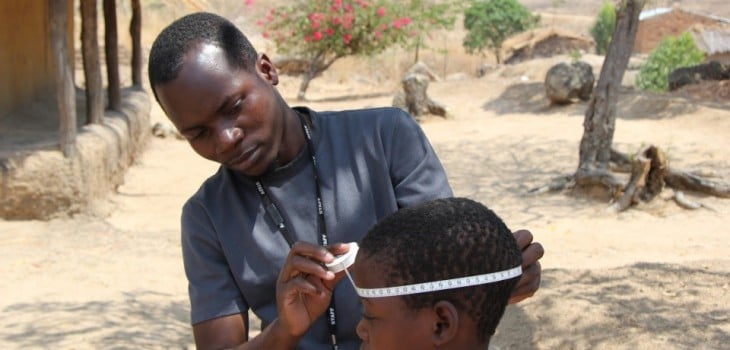We must not forget children who survive severe malnutrition
London School of Hygiene & Tropical Medicine https://lshtm.ac.uk/themes/custom/lshtm/images/lshtm-logo-black.png Tuesday 26 July 2016
Severe Acute Malnutrition (SAM) affects more than 19 million children under five each year worldwide and causes over 1 million deaths according to some estimates. The vast majority of these are from low-income countries, common catalysts being poverty, conflict and disease. The current drought in Ethiopia and South Sudan conflict are stark reminders that SAM remains a major global health problem.
Over the past decade, improvements in how we treat severely malnourished children are resulting in fewer child deaths, but this is only half the story – what about the survivors? Are they able to thrive and enjoy a good quality of life? Answering these questions is central to improving child and adult health.
There is strong evidence that malnutrition during development, particularly during foetal development in the womb, can result in greater chance of developing chronic diseases such as diabetes, hypertension, heart disease and obesity in adulthood.
Finding out whether malnutrition during childhood in low-income countries also leads to greater risk of chronic diseases in adulthood could be vitally important for preparing health systems to cope with coming events. Severe acute malnutrition in these circumstances tends to be caused by a combination of poverty, food shortages, repeated infections, diarrhoea and HIV.
Children who are young, growing rapidly and transitioning from breast milk to other foods are particularly susceptible to food shortages or small changes in household income, and may therefore develop malnutrition whist their older or younger siblings remain relatively protected.
Research from low birth weight infants has found that once these children are exposed to high fat and high sugar foods, their risk of adult diseases is much greater. Could this be true for survivors of severe malnutrition? If so, this is a very important consideration for health systems in low-income countries given the existing number of children still suffering from malnutrition, alongside the transitioning of societies to more urban, high fat, high sugar lifestyles.
Few studies have been able to track the health of children for several years after they have been discharged from malnutrition treatment. However, recent research conducted by myself and colleagues, published in the Lancet Global Health and funded by the Wellcome Trust, did just that.
Our study followed-up 398 children seven years after they had been treated for SAM in Blantyre, Malawi. We found that those who had suffered acute malnutrition during childhood were still significantly more stunted than their siblings and children in their community. 41% of children in the study who survived malnutrition were classified as stunted, compared to 33% in their siblings and 25% in the community children. The World Health Organization classifies anything above 40% as ‘very high’ levels of stunting.
Survivors of severe malnutrition were also found to have less muscle on their arms and legs, altered body composition, and a weaker hand grip strength. This suggests that they may have some heightened risk of chronic diseases in later life such as heart disease and diabetes. They may also be at greater risk of obesity due to physical weaknesses or have lower earning potential in adulthood due to these on-going deficits.
Our study also brought some good news though. Lung function, head circumference, and blood markers of NCD risk such as cholesterol levels, were similar in these children to their siblings and community peers. This offers hope that malnutrition survivors may have the potential to live a healthy adult life, with the correct help.
Although there are some programmes which look to improve growth in malnourished children, these almost always focus on the first 1000 days of life. What about those who suffer severe malnutrition around the age of two?
Tailored programmes designed to encourage growth, gain weight in a healthy manner, be physically active and avoid adult diseases are required. These could give child survivors of severe malnutrition the chance to thrive and reach their potential in adulthood – something all young people deserve.
More about the study
The Chronic Disease Outcomes after Severe Acute Malnutrition (ChroSAM) study was a project of the Malawi-Liverpool Wellcome Trust Clinical Research Programme, (MLW) and was hosted by the Department of Paediatrics, College of Medicine, Malawi. It was funded by the Wellcome Trust (Enhancement Award 101113/Z/13/A, linked to the MLW core grant).
The project was led by the School’s Natasha Lelijveld, Marko Kerac and Moffat J Nyirenda who conducted the study fieldwork while at UCL and MLW respectively. A full list of affiliations and acknowledgements is here (PDF).
Image: Study participant having head circumference measured in Malawi. Credit: Natasha Lelijveld
Our postgraduate taught courses provide health practitioners, clinicians, policy-makers, scientists and recent graduates with a world-class qualification in public and global health.
If you are coming to LSHTM to study a distance learning programme (PG Cert, PG Dip, MSc or individual modules) starting in 2024, you may be eligible for a 5% discount on your tuition fees.
These fee reduction schemes are available for a limited time only.